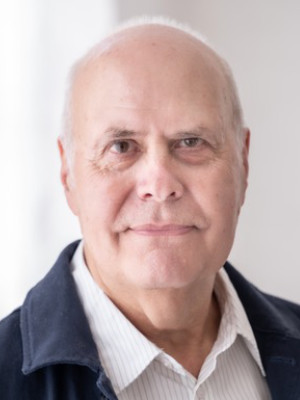Composing in lockdown
The background to the composition of the Third Symphony
This has been a difficult period for everyone and has changed our way of life in practical terms but perhaps more importantly, how we operate as human beings. The Covid 19 pandemic has resulted in a lack of optimism in many involved in the arts and particularly in music and the theatre where the interaction of performers with each other and with the audience is the foundation of its raison d’être.
I have heard that many composers during this period have found it difficult to find the motivation to work. However, in my own case, I found even more reason to express myself in music and you could say that I composed the third symphony in the strong belief that things will improve and that the work would be performed.
During the early part of the pandemic, I spent time making short videos for my choir about the composers of works that they had sung. This was a useful experience and gave me the chance to brush up on my own knowledge as well as communicating with my singers. Dinah was and is still, working from home and her regular daily flute practise inspired me to compose a new sonata. We also produced a CD of baroque music for flute and guitar. At this point, I had no idea that I was going to compose a new orchestral work.
I had composed my second symphony in 2018, the direct result of moving back into the city after spending ten years in a rural environment which didn’t suit me at all! I guess being a Londoner has imprinted the need to be with people and the hustle and bustle of an urban life. The opening of the second symphony is explosive and fairly relentless but I hope demonstrates my desire for a busy life. What I didn’t expect was for this ‘new life’ to be so deeply affected by the devastation of the pandemic.
The third symphony is a work that comes directly as a result of being ‘locked down’ and from this perspective it is an essay reflecting on the psychological effects on the composer – feelings that I am sure many of us have been aware of during this time.
It was composed in a relatively short period from February – May 2021 and it is difficult for me to say why I started to compose it, but I now realise that besides being a fully absorbing task, it was a way of expressing my varied reactions and emotions about the new world order ranging from sadness, humour, determination and defiance.
The orchestra required is small by today’s standards and only employs two horns and two trumpets in the brass section. This is a departure from my other two symphonies where there are parts for an array of percussion, piano and three trombones and a tuba plus four horns. I’ve always been impressed by how my teacher, Lennox Berkeley, made a forceful statement with small forces – a case of less is more. It is really a matter of technique in orchestration and in the end it is the music that matters and not just the impression.
Here is a brief synopsis of the symphony:
The first movement opens with a rising figure suggesting the birth of a new day. I always enjoy mornings as an early riser but over the last year these have been tinged with a sadness that things are not as they should be and I believe that this is reflected in the music. The opening returns twice more in the first movement and is to be heard again in the finale.

Following on from this is a prayer-like figure which was originally conceived in a flute sonata that I composed for my wife, Dinah at the start of the pandemic.

These two motifs are important to the work, the second one reaching its full development in the final movement.
The overall structure of the first movement is A-B-A-C-A, although each time ‘A’ appears in a changed format. Both B and C are allegro sections that include a second subject that is also fully developed throughout the work and which I illustrate here:

Both the allegro sections have no particular programme except that they represent a driving force of determination that comes to its full potential in the finale. The movement ends quietly with solo wind instruments reflecting on the prayer-like figure that forms a foundation before the music drifts quietly away.
The second movement (Tempo di Waltz) is in many sections and although originally conceived as a rather demonic dance, it also develops using material from the first movement as well as introducing new ideas. The opening theme is whimsical enough but the second theme contorts the carefree idiom of the first theme.
Theme 1.


Theme 2.

This movement is full of contrast between lightness and humour – there are several duets involving the violins, solo violin and flute where there are examples of gossamer scoring and other passages that are very strong and rhythmic with a nod to Shostakovich, a composer who’s dark humour I’ve always appreciated. The movement ends lightly, almost comically.
The third movement ‘Elegy’ is perhaps the heart of the work although the material here is extensively developed in movement four. In the preface I state that it ‘is dedicated to all those who lost their lives to the illness both here and abroad’
The daily news about those who had died filled me with great sadness and anger. Behind each death there were many grieving families left behind. I was outraged that in the end it was becoming a matter of statistics – a bit like the collateral damage seen in a war.
Bruckner has always been a very important composer for me. I find his music is on a high spiritual plain and it effects me by its depth and humanity. I enjoy the idea that we are being taken on a musical journey where he speaks to us by the development of his ideas. I have been fortunate enough to conduct his fine anthems and both his third and fourth symphonies – the coda to the fourth is quite astonishing. The third movement of my symphony is prefaced with the inscription ‘hommage to Anton Bruckner’ and the main theme and its pizzicato accompaniment owe something to his fourth symphony:

However, this is where the similarity ends and at bar 17, I introduce a quote harking back to my first symphony composed in 1983. I have found myself looking back quite a lot during the pandemic and I am sure that this is a natural process when the future seems uncertain. This is not done in a nostalgic sense but rather one of assessing life in general and what it has meant and what it means for the future. At bar 36, the prayer-like figure is re-introduced and this leads into a completely new passage over tremolo strings that is akin to recitative:

This theme is taken over by the 1st and 2nd violins and this in turn leads to a climax that resolves back into the opening music. The prayer-like figure is then heard again with a little more development before it is finally played on the woodwind choir for the first time marked ‘religioso lontano’. The movement ends quietly with a held F minor chord in the strings and ominous triplets in the timpani.
The finale is quite different in style and it commences with a strident, confident march - like figure in the wind section. This is played by all sections of the orchestra:


After a short transition, the second subject of the first movement re-appears and this is developed further. At bar 36 I introduce a second self-quotation. Marked ff intenso, this is to be found in my string quartet no.2 that was premiered and recorded by the Bingham String Quartet in 2006. Psychologically, it has more to do with the opening figure of the symphony and speaks of stress and unease in an expressionist idiom:

This intensity is short lived and we return to the march-like figure from the opening. At bar 47, a completely new idea is introduced. Marked wistfully, it gives an almost pastoral relief from the preceeding ‘angular’ writing

This figure is then orchestrated in the woodwind and after a short transition there is a statement of the opening bars of the symphony that leads into the ‘prayer’ but this time it is developed over 32 bars perhaps making it the most important theme in the work. Elements of the pizzicato from the ‘Elegy’ are introduced and there is reference back across the symphony. The ‘A tempo primo’ at bar 132 brings back the march-like figure and the coda begins at bar 154. This is a fanfare ending that brings back the ‘prayer’ theme in a completely new and assertive guise.
There is no more self-reflection but rather a purposeful intensity that drives the music to its conclusion.
The third symphony is my most important work to date. I’m usually more productive when I have a ‘programme’ to work to. Other pieces have concentrated on events such as ‘The Martyrdom of Latimer’ or landscapes such as in the ‘Northern Picture’. However, this has been the first time where a ‘state of mind’ has been the stimulus and my hope is that it chimes with the feelings of others.
© Adam Pounds (June 2021)
